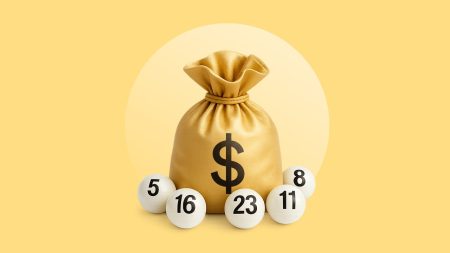The Good Brigade/Getty Images
Key takeaways
- Non-conforming loans are mortgages that aren’t eligible for sale to Fannie Mae and Freddie Mac, the two government-sponsored enterprises that back much of the U.S. mortgage market.
- Often, a mortgage is considered non-conforming because it’s for an amount higher than the conforming loan limit.
- A loan could also be considered non-conforming if the borrower doesn’t meet other Fannie and Freddie credit or financial criteria.
What is a non-conforming loan?
A non-conforming mortgage is a type of home loan that doesn’t meet some or all of the guidelines that make them eligible for purchase by Fannie Mae and Freddie Mac. These government-sponsored enterprises (GSEs), overseen by the Federal Housing Finance Agency (FHFA), support much of the secondary mortgage market in the U.S.
A loan could be labeled non-conforming for a number of reasons, such as:
- The amount of the loan exceeds conforming loan limits ($806,500 in most parts of the U.S. in 2025).
- The borrower’s credit score and debt-to-income (DTI) ratio aren’t within conforming qualifying standards.
- The loan has a non-traditional structure, such as an interest-only repayment schedule or a term other than 15 years or 30 years.
How does a non-conforming mortgage work?
Nonconforming loans work in much the same way as a conforming loan in that they allow you to borrow money to buy a real estate property. Many mortgage lenders offer non-conforming loans, and some even specialize in them.
The key difference: Fannie Mae and Freddie Mac don’t purchase non-conforming mortgages from lenders and package them for investors. Typically, the capital derived from these sales helps lenders continue to offer more mortgages.
For this reason, lenders tend toward conforming versus non-conforming loans because they can be easily pooled into investment bundles and sold on the secondary mortgage market. Because they can’t sell non-conforming loans to the GSEs, lenders often keep these on their books, which requires more work to underwrite and service.
For you as the borrower, the lack of GSE backing isn’t necessarily cause for concern; there are some non-conforming loans that are backed by other government agencies instead of the GSEs. The non-conforming loans without backing, however, might present risks.
Current non-conforming or jumbo loan rates
The average rate for a 30-year jumbo loan, one of the most common types of non-conforming loans, is 6.79 percent, according to Bankrate data as of July 29, 2025. The average rate for a 15-year jumbo loan is 6.21 percent.
Types of non-conforming loans
The most common types of non-conforming loans are:
- Government-backed loans (FHA, VA and USDA loans)
- Jumbo loans
- Hard money loans
- Interest-only loans
- Owner or seller financing
Government-backed loans
A government-backed mortgage is one insured or guaranteed by either the Federal Housing Administration (FHA loans), the U.S. Department of Veterans Affairs (VA loans) or U.S. Department of Agriculture (USDA loans). These aren’t eligible for Fannie Mae or Freddie Mac to buy, but they are backed by their respective agencies, so you can rest assured they’re safe products. Here’s an overview:
- FHA loans: FHA loans allow you to borrow money for a home purchase with a credit score as low as 580 and a down payment of just 3.5 percent — or a credit score of 500 if you put down 10 percent. Unlike some other non-conforming loans, you’ll need to pay mortgage insurance premiums with an FHA loan.
- VA loans: VA loans are mortgages for military service members, veterans and surviving spouses. If eligible, you can buy a home with a VA loan for no money down and no requirement to pay mortgage insurance. Instead, you’ll pay a funding fee.
- USDA loans: USDA loans are for those buying a home in certain rural areas designated by the government. Like VA loans, you can get a USDA loan with no money down, but you’ll be required to pay upfront and annual fees.
Jumbo loans
A jumbo loan is one of the most popular types of non-conforming loans, though not every lender offers them. These loans are for borrowers in need of a bigger mortgage than what’s allowed with a conforming loan. In most areas in 2025, that means a mortgage for more than $806,500 (or up to $1,209,750 in higher-priced markets). In many places where home prices have risen substantially, a jumbo loan might be the only option for some borrowers.
While they’ve historically been higher than conforming loans, jumbo loan rates have trended similarly to conforming loan rates in recent years. They can be more difficult to qualify for, however. You might need to put more money down upfront, for example, have a better credit score (typically 700 or higher) and additional cash reserves or financial assets at your disposal.
Other non-conforming loan types
- Hard money loans: A hard money loan is a non-conforming loan providing a borrower with short-term funding. Real estate investors often use them to flip properties. Hard money loans have higher interest rates and shorter terms, so they’re more expensive and carry more risk.
- Interest-only loans: Interest-only loans are non-conforming because they aren’t structured like conforming loans, which require you to repay both principal and interest as the loan amortizes over time. Rather, with an interest-only loan, you’ll pay just interest for an initial period (for example, 10 years), after which you’ll repay both interest and principal, sometimes in one lump sum known as a balloon payment. This payment can be unmanageable for some borrowers.
- Owner or seller financing: With owner or seller financing, also known as a holding or purchase-money mortgage, the homebuyer pays the seller — rather than a mortgage lender — in monthly installments at an agreed-upon interest rate.
Pros and cons of non-conforming loans
Pros of non-conforming loans
- Flexibility: If you can’t qualify for a conforming mortgage due to lacking credit or savings, a non-conforming loan could present a path to getting a mortgage.
- Higher loan limits: With non-conforming mortgages, you’re not limited by any cap on the amount you can borrow.
- More use cases: This type of loan could provide funding for a house flip or to buy a more expensive property a conforming mortgage wouldn’t cover.
Cons of non-conforming loans
- Fewer lenders: While most mortgage lenders offer conforming loans, not every lender offers non-conforming mortgages.
- Higher risk: A non-conforming loan could have an unusual repayment schedule or other features that make it harder to repay.
What to know about non-conforming loans today
Non-conforming mortgages are often best for those who need a larger loan or otherwise don’t qualify for a conforming loan. This might include borrowers who have a lower credit score or limited or no down payment savings, as well as real estate investors or business owners.
“Non-conforming loans are not ‘bad’ at all,” says Travis Erickson, mortgage broker with Bonelli Financial Group based in Arizona. “Right now, rates for some non-conforming loans are surprisingly competitive, especially if you are looking at purchasing or refinancing an investment property. Sometimes rates are even slightly lower than conforming ones, depending on the lender and your credit profile.”
If you don’t qualify for a conforming loan, don’t let the non-conforming label scare you.
“Work with a broker or lender who understands the nuances of all products and can shop across multiple options, so you are getting the right loan for you, not just what fits inside a certain box,” Erickson says.
Why we ask for feedback
Your feedback helps us improve our content and services. It takes less than a minute to
complete.
Your responses are anonymous and will only be used for improving our website.
Help us improve our content
Read the full article here












